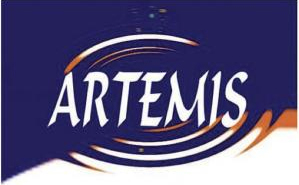- Jeudi 10 Octobre 2024 10h30: "Probing massive binary stars with gravitational waves" by Simon Stevenson, Swinburne University
- Vendredi 14 juin 2024 10h30, "DeepHMC: a Hamiltonian Monte Carlo algorithm for fast BNS inference", "Edward Porter (APC, Paris)
- Jeudi 13 Juin 2024 10h30: "How to beat the quantum limits in gravitational-wave detectors" by Eleonora Polini, MIT
- Jeudi 23 Mai 2024 10h30: "Gravitational wave Symphony: being sensitive is crucial!" by Jishnu Suresh, Universite de Louvain La Neuve
- Jeudi 23 Avril 2024 10h30: "Meet GW230529: the gravitational wave from the merger of a 3.6 solar mass compact object and a neutron star" by Shanika Galaudage, OCA Lagrange
- Jeudi 11 Janvier 2024 10h30: Stochastic background of gravitational waves par Alba Romero Rodriguez, University of Louvain La Neuve, Belgique
- Jeudi 23 Novembre 2023 10h30: E-TEST prototype for advanced GW technologies par Chiara DiFronzo, University of Liege, Belgique
- Jeudi 19 Octobre 2023 10h30: Overcoming SQL: ultracold atoms as a negative effective mass par Dylan Sabulsky (LSSB, UAM)
Is it possible to utilize an ultracold atomic spin system as a negative effective mass to improve frequency metrology as well as the sensitivity of modern GW detectors? Experiment protocols mixing such long lived ensembles with entangled photons allows for the counterbalancing of quantum backaction in an optical cavity, with the possibility of going well past the Standard Quantum Limit (SQL). Here, we briefly cover this new application of quantum technology and discuss possible implications for the next generation of laser interferometers, laboratory frequency metrology, as well as precision fundamental physics measurements.
- Vendredi 30 juin 2023 10h30: Pulsar timing (nano Hz gravitational waves) detection par Joe Romano, Texas Tech University,
The gravitational wave - pulsar timing community will be making a major announcement on June 29. Professor Joe Romano, Texas Tech University, will give a seminar on June 30, 10h30, in the NEF. Prof. Romano is a member of the NANOGrav Collaboration and will summarize the results presented on June 29.
- Jeudi 9 Mars 2023 10h30: Multi-messenger emission from core-collapse supernovae: impact of rotation and magnetic fields par Matteo Bugli, AIM/CEA Saclay
- Jeudi 13 Octobre 2022 à 10h30: "Multimessager analysis with neutrinos" par Damien Dornic, CPPM, University Aix Marseille
- Jeudi 12 Mai 2022 à 10h30: "Unraveling neutron star interiors with multimessenger observables" par Geert Raaijmakers, University Vreui Amsterdam
- Jeudi 31 mars 2022: "Electromagnetic counterparts of binary neutron star mergers: perspectives for future detections & multi-messenger studies " par Frederic Daigne, Institut d'Astrophysique de Paris
- Jeudi 24 mars 2022 "The hosts and environments of explosive transients" par Christina Thoene, Astronomical Institute of the Czech Academy of Sciences
- Jeudi 18 Novembre 2021 à 10h30: "La relativité intriquée" par Olivier Minazzoli, Artemis/Centre Scientifique de Monaco
Les incontestables et considérables succès de la relativité générale, formulée en 1915 par Albert Einstein, tranche avec la volonté de ce dernier de modifier sa théorie dès les années 1920. Il y consacra d’ailleurs l’essentiel de sa recherche jusqu’à la veille de sa mort en 1955 à Princeton. Ses raisons pour vouloir modifier la relativité générale ont été multiples et fluctuantes, mais partageaient toutes le même espoir de retrouver la relativité générale comme limite d’une nouvelle théorie plus générale encore. Dans cet exposé, je présenterai les principaux motifs pour lesquels la communauté scientifique pense que la relativité générale pourrait (ou devrait) être améliorée, avant de présenter une nouvelle théorie générale de la relativité qui semble avoir le potentiel pour cela : la relativité intriquée.
- Jeudi 14 Octobre 2021 à 10h30: "A multi-messenger astronomy eco-system" par Michael Coughlin, University of Minnessota
With the detection of compact binary coalescences and their electromagnetic counterparts by gravitational-wave detectors, a new era of multi-messenger astronomy has begun. In this talk, I will describe how GW170817, our first example in this new class, is being used to constrain the unknown equation of state of cold supranuclear matter, and to measure the Hubble constant. I will then discuss how current ground based optical surveys and dedicated follow-up systems are being used to identify more of these, and how we are developing models to test what we find. We will close with near-term prospects
for the field.




